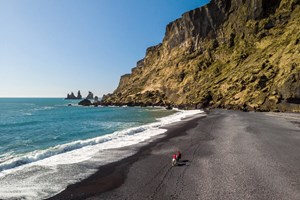Icelandic Cattle
The Icelandic cow is, like the Vikings related to the Nordic countries, most likely from Norway. The Vikings did bring everything with them when they settled in Iceland and the animals like sheep, cow, dog, cat, rodents and last but not least the Icelandic horse where no exception.
The Icelandic cow is small compared to other cow breeds in the world. It has not yet been bred, although it had been some debate about if it should be done or not. Because of it’s small size they to not milk as much as many other cow breeds in the world. Back in the days it was good that the cows were not big, when houses were small and often it was hard to collect enough hay for the winter.
The most special thing about the Icelandic cow is how colorful they are. If you look over an Icelandic field during summer you can see many different color mixture between individuals. The Icelandic farmers love the colors and they try to have them as colorful as they can, it makes each cow more special and personal. Gives them more of a character.
It is believed that there where a lot of cattle in Iceland right after the settlement time. The climate was good, warm and growing condition where good. During 14th century, it began to get colder, meaning harder condition for racing them.
For centuries, cattle farming was such that farmers produced milk and dairy products for their own families. Poor farmers could not always afford to have cows or cattle so they had to rely on the sheep and the products they gave.
Around 1930, with better transportation, development of town and villages and more technology, cows in Iceland began to increase along with the production of milk. Farmers established association for the operation and specialization became more common in Iceland.
Farmers keep the cows inside a cowshed during winter and feed them with hay and feedstuff. In the spring, when weather is getting warmer (usually around May), the cows can go outside and walk between milking. Today automatic milking system is very common in Iceland and many farmers use robotic milking, which means that the cows live mostly free during the summer. They can decide when they want to be outside or inside and also when they want to milk them self. Bull breed is also practiced in Iceland, just like the cows they stay inside during the winter but can go outside during the winter.
The cow can give birth to one calf, although sometimes they can have two. The gestation time is similar to the humans, around 9 months. During the last weeks of pregnancy, the cow stops milking, but starts again immediately after she gives birth.
The legend has it that during the night of Jónsmessa the cows can speak. So if you’re traveling around Iceland on the night of Jónsmessa, listen carefully. True or not you tell me.
As mentioned before, Icelandic cows are very colorful and therefor great for photography just like the Icelandic horse. You can find the cows all around Iceland during summer time.
